Identifying Battery Draining Culprits
It’s been two years since we completed our van conversion, so we’ve had time to learn what drains an RV Battery the fastest. While we have never run out of power, we cannot imagine a worse feeling. We built our van to enjoy mountain bike, surf and ski trips with the comforts afforded by our customized adventure build. We want to wake up on remote campsites, but we also want to make fresh coffee, keep the fridge running, and fire up the furnace on cold weather trips.
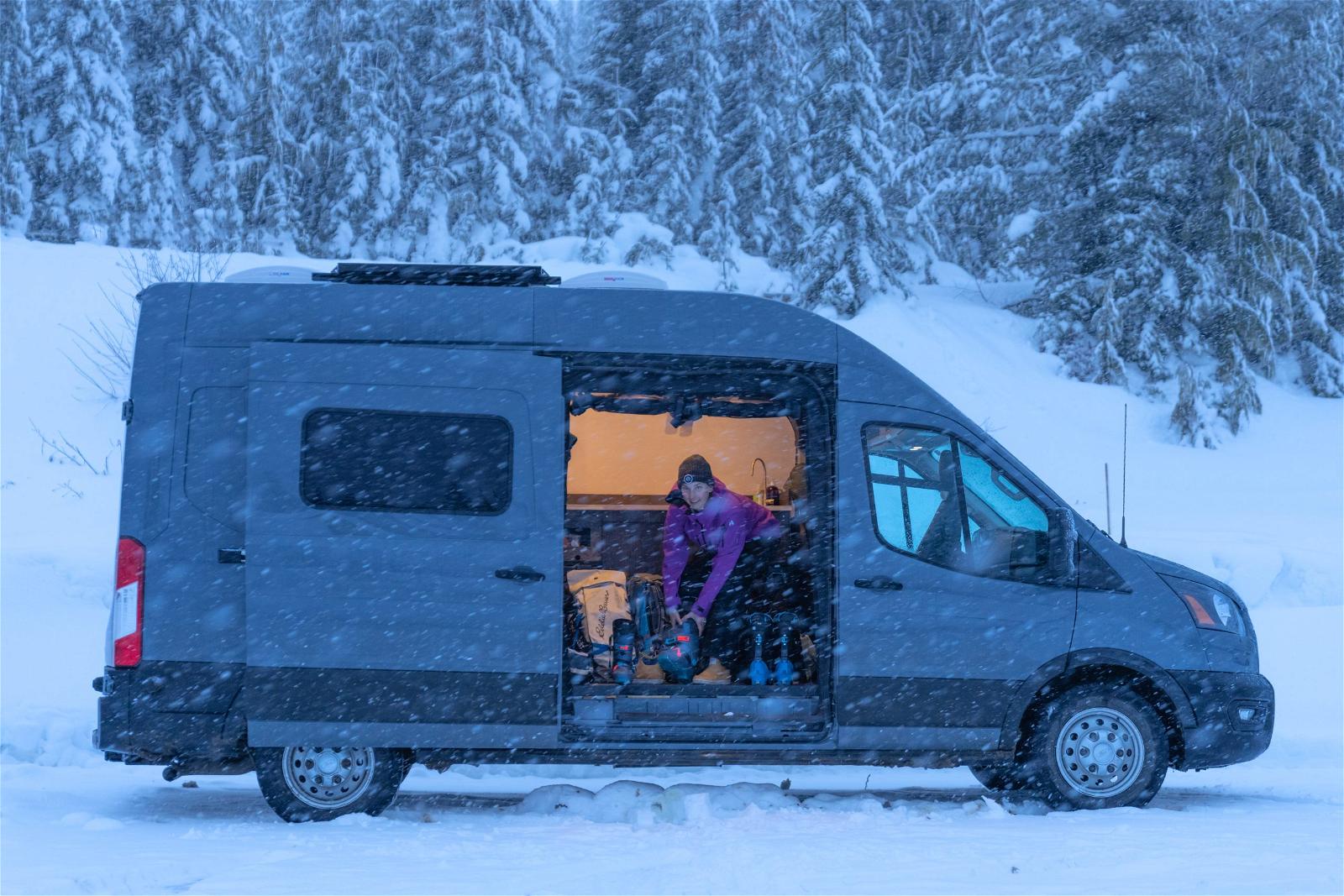
J. Bartlett Port Albeni, Canada
Fortunately, we started with a solid foundation. Our electrical system is powered by two Dakota Lithium 12V 100Ah Deep Cycle LIFEPO4 batteries wired in parallel. For charging, we rely mostly on a 320W solar panel wired into a Victron Energy SmartSolar MPPT 100 | 30 charger. As a backup, we also run a Victron Energy Orion-Tr Smart 12/12-18 isolated DC-DC Charger that tops up our batteries whenever the vehicle is running.
We can charge via shore power, too, through our Samlex Evolution Series inverter, but it’s rare. We simply favor unserviced campsites at BC Recreation Sites and on crown land, which is the Canadian equivalent of boondocking on US Forest Service land.
In theory, it’s overkill. We invested in energy efficient accessories, including LED lights, a small 12V refrigerator, and a pair of MaxxAir MaxxFan Deluxe fans. We primarily cook with propane and our furnace burns more gasoline than electricity.
In practice, we’ve run low. We’ve learned it’s critical to identify the battery draining culprits to truly maximize our van conversion or RV battery life.
Not All Batteries Are Created Equal
As mentioned, we run two Dakota Lithium 12V 100Ah Deep Cycle LIFEPO4 Batteries, which give us significant advantages over AGM battery alternatives. If you haven’t upgraded yet, it’s the easiest way to significantly increase battery performance and life.
The advantages are clear. Lithium-Ion batteries charge faster than AGM batteries, which allows you to charge faster with the same solar panels. They also allow a deeper discharge and maintain a consistent voltage throughout the discharge cycle, providing a more constant power supply. They also last significantly longer, maintaining a minimum of 80% capacity for at least 2000 cycles.
What drains an RV Battery the fastest, actually?
Our Samlex Evolution F Series 1200W inverter efficiently converts 12V DC power into 120V AC power without much loss to waste heat; however, we’re still careful to shut it off when it isn’t in use to avoid draining our batteries through standby power consumption.
While it isn’t the inverter that drains an RV Battery the fastest, it’s the appliances that require the 120V AC power. For most van conversions, the kitchen is the biggest culprit.
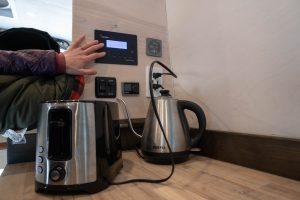
High Power Demand Accessories
Kettle: We run an inexpensive and inefficient gooseneck kettle that only costs $25 on Amazon. It’s lasted years longer than we ever expected. The consequence of powering a 1000W kettle is it drains nearly 10% of our battery storage to boil 1.5L of water.
Toaster: We shopped around and found an 800W toaster that limits our overall power consumption, but it’s still the second worst power consumer in our small kitchen. Although it draws 800W when it’s in use, it only runs for a few minutes. When set on a middle setting, it only consumes 3-5% of our battery storage.
Induction Cooktop: When we built our van, we opted to cook with a propane Coleman stove. We already owned it and we appreciated that we could set it up in the van or outside on a picnic table. Had we built it into the van, we likely would have opted for an induction cooktop. But it’s an upgrade that comes at a steep cost.
Induction cooktops require significantly more power, so we would have needed a 2000W or even 3000W inverter and substantially more battery storage. Ultimately, we just didn’t think it was worth the additional cost.
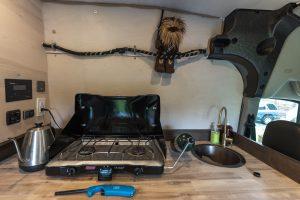
J. Bartlett – VanLife
120V Wall Plug: Another inefficiency, powering anything through the 120V wall plug uses more electricity than sticking to the 12V system. Anything designed for use at home will inevitably use more power than a similar product designed for a 12V system.
For something as simple as charging batteries – and most of us need to keep cell phones, cameras, and laptops powered when on the road – it’s simply more efficient to add 12V plugs rather than use the inverter.
Other accessories that drain an RV Battery fast
After the high-demand power usage of high-watt 120V appliances, the rest of our van conversion barely uses any power. It is still important to factor in anything that runs continuously. Appliances like the refrigerator and furnaces don’t draw much electricity, but they’re often set up to turn on automatically.
Fridge: There are plenty of factors to consider when looking into a 12V refrigerator, as their efficiency is dictated by more than its motor. The ambient temperature plays a vital role in how frequently a refrigerator runs, so it’s important to install the refrigerator with sufficient ventilation around it. A well insulated van, which should maintain a cooler internal temperature throughout the summer, will also impact its performance.
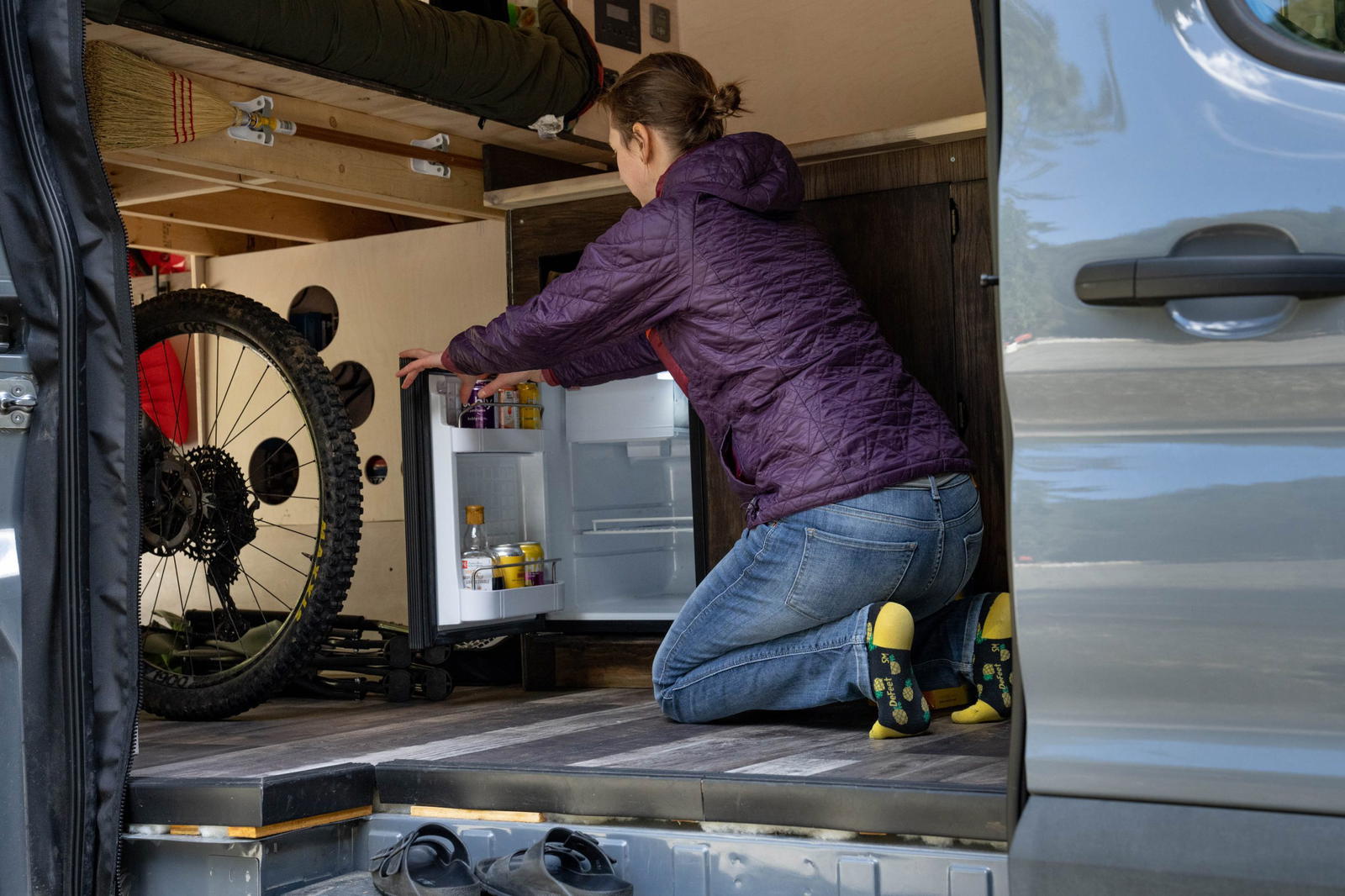
We opted for the Indel B Cruise 65L 12/24V refrigerator and freezer combo. It’s super efficient, but it can still draw up to 24Ah per day. Because we built our van for cold weather ski touring trips, it’s extremely well insulated. We also cut numerous ventilation holes in the cabinet where we installed the fridge, to allow the heat created by the motor to dissipate. In practice, it’s really worked. It averages less than 12Ah per day, less than half its maximum draw.
Heater: Most RVs or van conversions use furnaces that burn gas, diesel, or propane. They also don’t run continuously all day; how often it’s on depends on outdoor temperature, van insulation, and passenger comfort. But all furnaces still require some power output, using most at startup and less while running.
In our van, we opted for a Webasto Air Top 2000 STC Gasoline, which draws its fuel from the tank. It’s shockingly efficient, but still draws 30W at startup and 15-20 when running. It might not seem like much, but when camping in colder weather it can impact our battery life.
Starlink: We use our van to disconnect, so we haven’t been tempted by Starlink; however, it’s showing up on more and more RVs. The standard RV Starlink system runs on a 120V system, requiring the inverter. It draws between 50-75W when in use and 20W when in standby.
What accessories barely drain an RV battery?
Before we installed the DC to DC charger or the solar panel yet, we had 8 LED lights and two MaxxAir MaxxFans wired into the electrical panel. We hadn’t installed the solar panel or Dc to Dc Charger, so we had no ability to charge anything.
Wanting to check that things worked, we turned the lights on and cranked both fans to their maximum settings. The Victron app showed we had an infinite power supply. I left everything on for a few days before I realized that the battery meter had been installed incorrectly. The batteries were low, but we still hadn’t drained them.
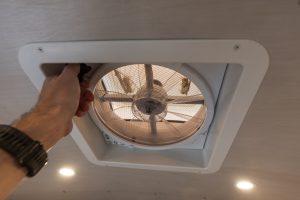
MaxxFan Deluxe with 2.8Amp Draw
MaxxFans: Anecdotally, the MaxxAir MaxxFan Deluxe must be the most popular RV or Van conversion. Their distinct shape stands out on the roof of nearly every van conversion I’ve seen. It’s for good reason, too, as they’re incredibly efficient. At full power – and how often do you actually run the fan at full power? – they only draw 2.8Amp. At its lowest setting, it only draws 0.1Amp.
LED lights: The age-old reminder to shut the light off to save power doesn’t really apply if you run dimmable LED lights. A 4-pack only draws 0.2Amp. In our van, we run 8 lights through the same switch.
Identifying Unknown Battery-Draining Culprits
If you encounter any issues with unexpected loads draining your batteries, don’t hesitate to investigate. Ignoring Phantom loads can, at worst, lead to electrical system malfunction.
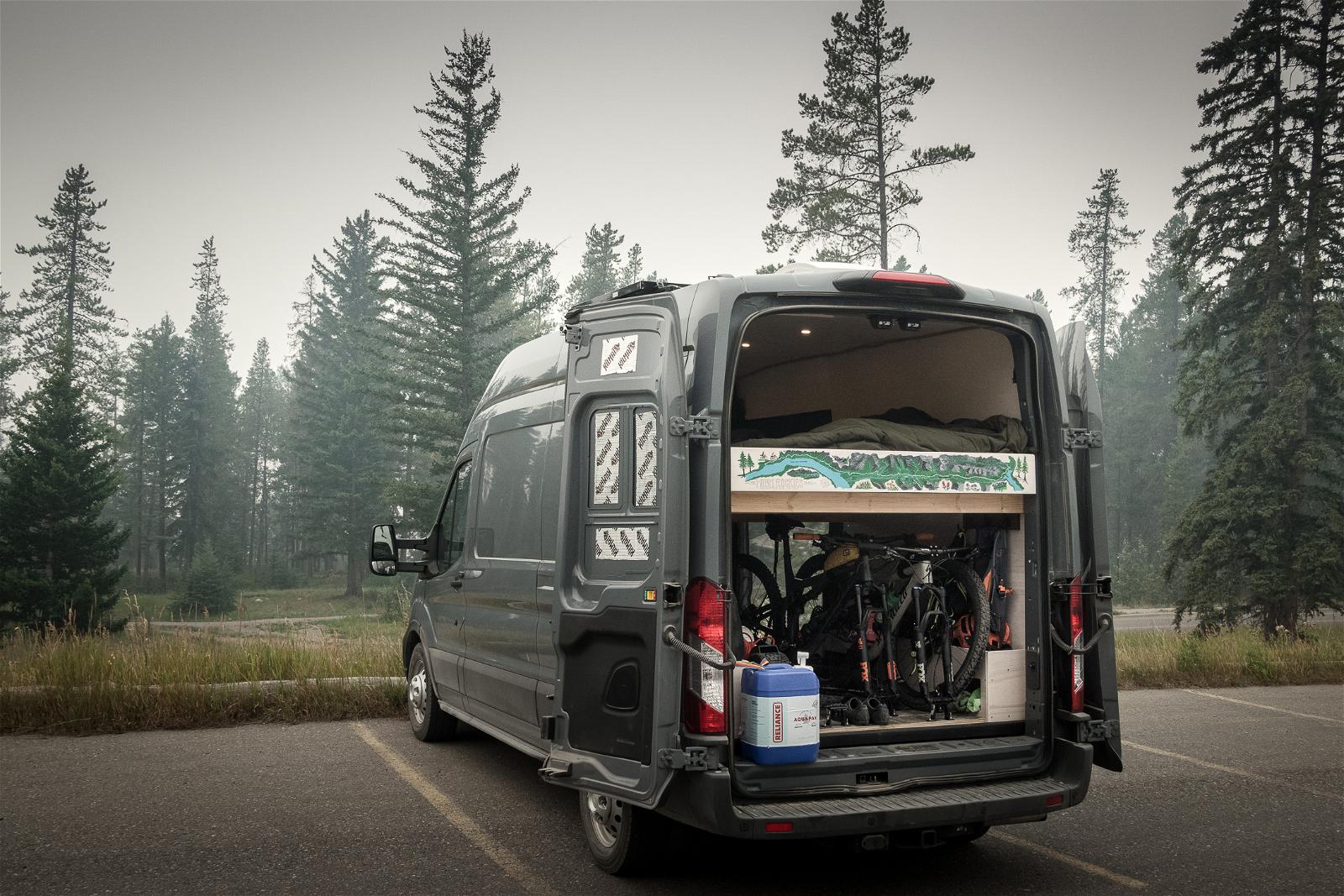
Jeff Bartlett – Alberta, Canada
Phantom loads refer to devices that continue to draw power even when turned off. Common culprits include chargers, power adapters, and standby lights on electronics. Use power strips with on/off switches to cut power to devices, if possible, if they don’t shut off completely when not in use.